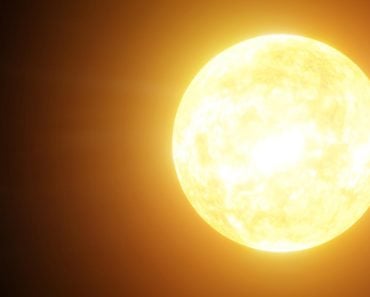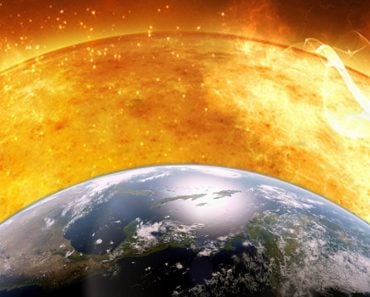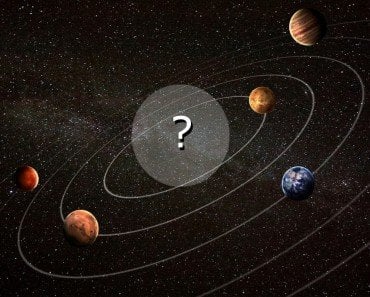Without greenhouse gases, our planet would be a cold and barren wasteland. They prevent a portion of the planet’s thermal energy from escaping into space, thus making our planet livable.
The sun has been worshipped since the beginning of civilization. After all, it is the source of all energy and life on Earth. The average annual solar energy received by Earth’s surface is 340 watts for every square meter of surface area. A joule is a unit of energy and one watt equals 1 joule per second. A joule is the energy used to lift a small fruit, like an apple. A Watt refers to rate at which this energy is used. For example, lifting 10 apples in one second would be equal to using 10 watts of energy.
In contrast, the average heat flux from the Earth’s core via the mantle is negligible, at only 0.06 W/m2. This makes the Sun the sole powerhouse of all climate systems on Earth.
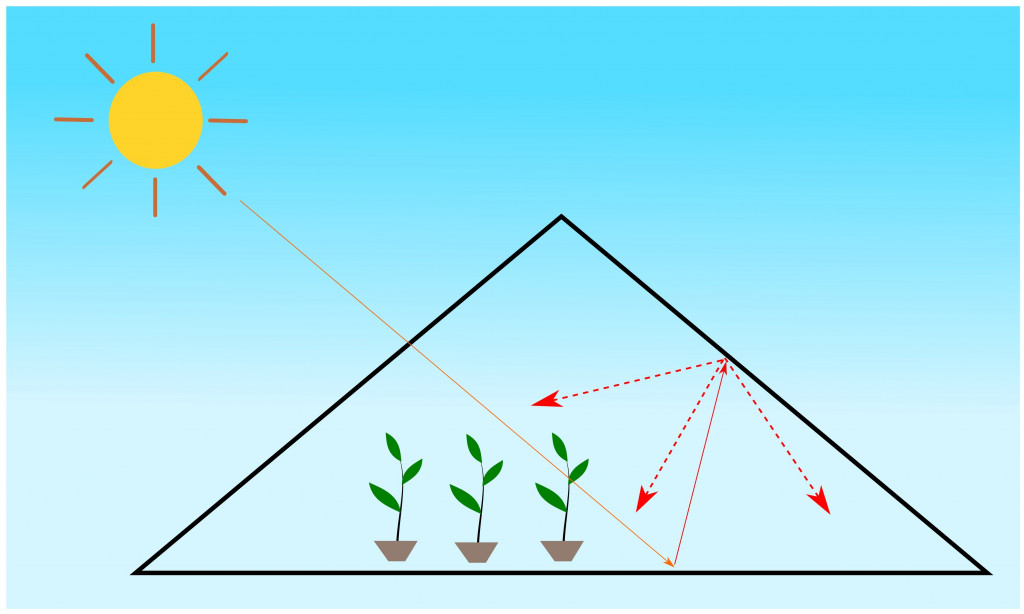
Some of the sunlight that touches the surface reflects into the atmosphere as infrared radiation (heat). This infrared radiation is taken up by greenhouse gases. The greenhouse effect is the process by which many gases in the atmosphere capture heat from the Sun. Without these gases, the majority of the heat produced by the Earth would be lost to space, thus turning the globe into a huge ice ball.
These greenhouse effects are seen in gases like carbon dioxide, methane, ozone and Nitrous oxide.
Recommended Video for you:
What Is The Greenhouse Effect?
Greenhouse gases absorb energy from both the Sun and the Earth’s surface and emit it in all directions as infrared energy, including downward to the surface. They function similarly to a greenhouse’s glass, as they permit light to pass through, while retaining heat in the air. The greenhouse effect results from this heat being trapped, thus elevating the temperature at the earth’s surface.
How Does The Greenhouse Effect Affect The Planet?
For daily and seasonal cycles, the average global surface temperature is constant. As a result, the Earth’s surface must be returning energy to space at a rate of about 340 W/m2. The surface would heat up if the amount were any lower, and cool down if it were any higher.
The Earth maintains an equilibrium among incoming and departing radiant energy called radiation equilibrium. The amount of solar radiation reflected by a planet depends on its albedo.
A fully black planet would absorb all solar energy, whereas a flawlessly white one would reflect all of it. To read more about the albedo feedback effect, read this article explaining whether the Earth was ever a Giant Snowball. An increase in temperature causes a black body’s emission to rise sharply. When exposed to the Sun, a black body warms up to the precise temperature where it can reflect the solar energy back into the universe.
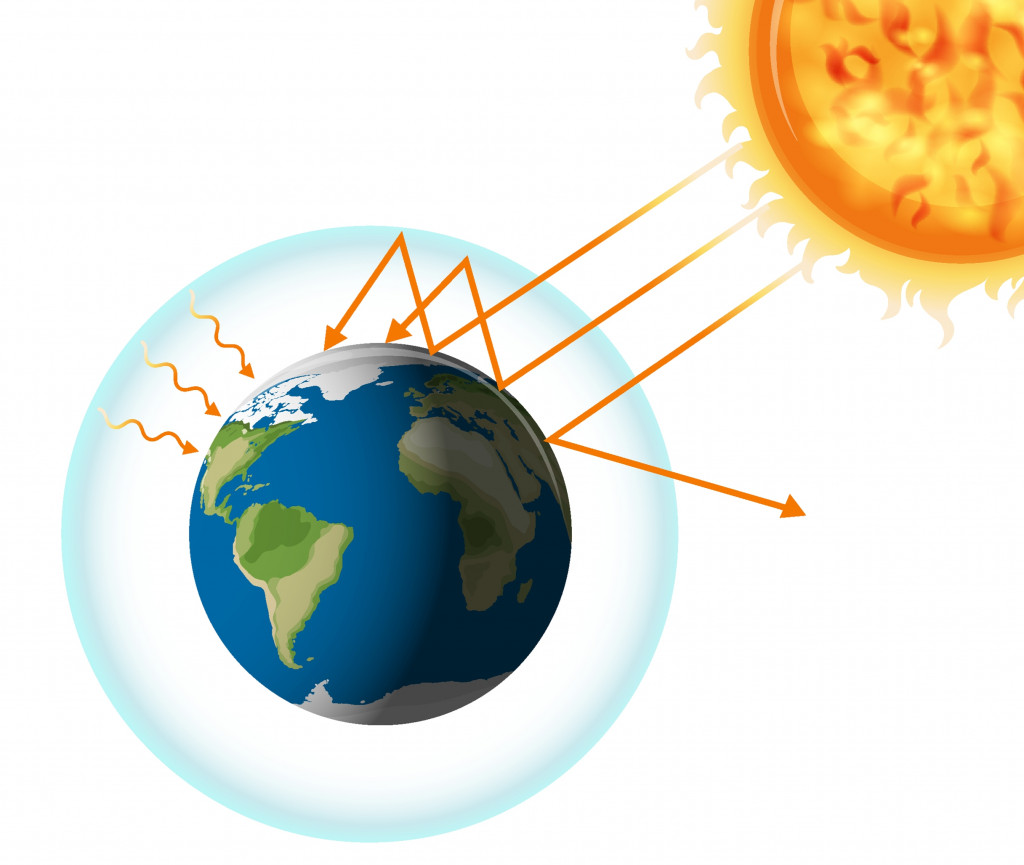
For a “gray body” like the Moon, the same rule holds, but the reflected energy must be taken out of the radiation balance. Day and night cycles must also be taken into consideration for spinning planets like the Moon and Earth. The temperature of the Moon reaches a scalding 130 degrees Celsius during the day and a freezing -170 degrees Celsius at night. Who would even think of living there?
The Earth revolves considerably quicker than the Moon (once daily, instead of once per month), which balances out temperature differences between day and night. Because of Earth’s blue seas, white clouds, and polar ice, its albedo is around 29 percent. If our atmosphere did not include greenhouse gases, the average temperature at the surface necessary to balance the absorbed solar energy would be around -19 degrees Celsius.
This is low enough to freeze all the world’s water, making the planet a barren wasteland. Instead, the average surface temperature of the Earth stays at a comfortable 14 degrees Celsius (57 degrees Fahrenheit). The greenhouse effect handles the 33°C difference.
How Does Earth Balance Incoming And Outgoing Solar Radiation?
The solar energy that is not reflected is absorbed by the Earth’s surface. To establish radiation balance, Earth radiates the same amount of energy as infrared energy back into space. Because of the heat captured by greenhouse gases, the quantity of energy transferred away from the Earth’s surface is much greater than the amount received as direct solar radiation.
The surplus is the energy emitted by greenhouse gases as infrared radiation towards Earth. This “back radiation” is responsible for the Earth’s surface being 33 degrees Celsius hotter than it would be without greenhouse gases.
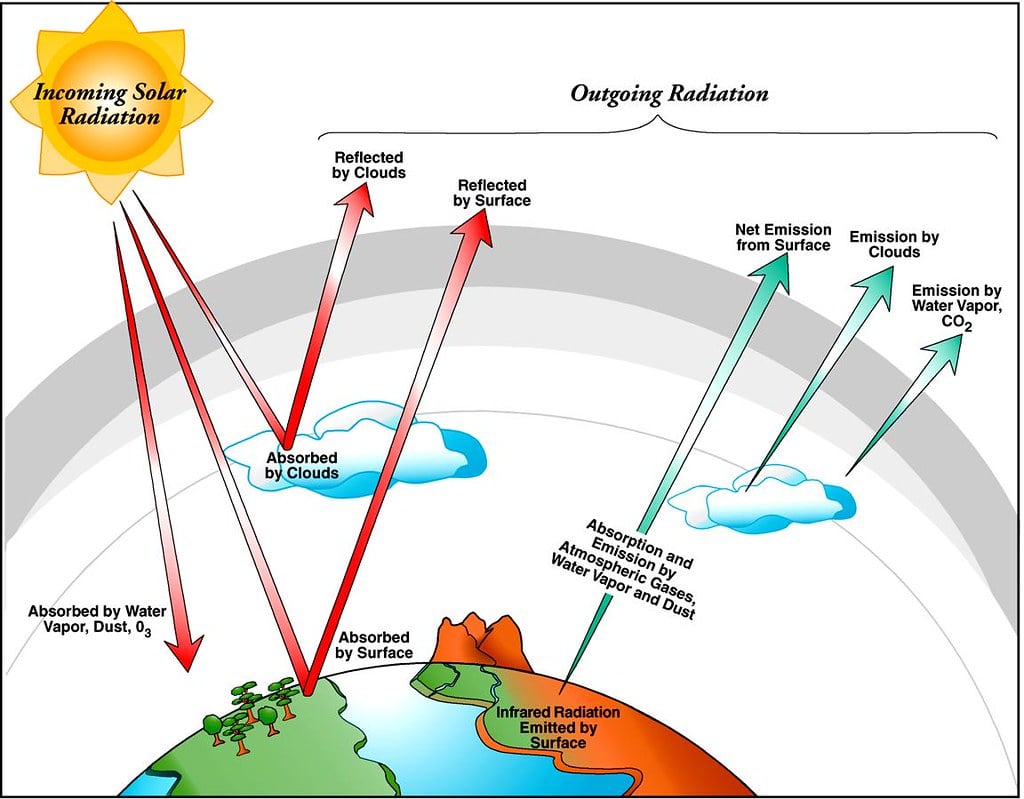
How Do Greenhouse Gases Absorb Heat?
Greenhouse gases display a more complex structure than other atmospheric gases, allowing them to trap heat. They either return energy to the surface, to other greenhouse gasses, or to space. As energy is taken in, the atoms tremble, as they are weakly linked. The vibrating molecules begin to emit radiation, which is captured by other greenhouse gas molecules. This ongoing process holds heat near Earth’s surface.
Interestingly, greenhouse gases do not absorb every photon that passes through their routes. Instead, they mostly absorb photons escaping the Earth towards space.
Conclusion
Several greenhouse gases remain in the environment for hundreds of years after they are emitted. This results in long-term warming impacts on the climate that will impact both current and future generations.
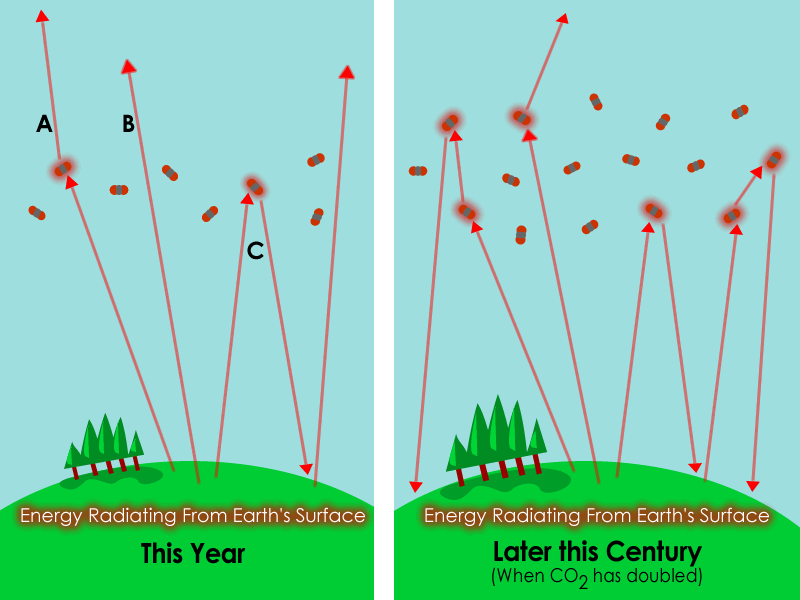
With all of the international discussion surrounding the alarming rate of climate change and global warming, we might be quick to label greenhouse gases as the evil culprit. However, it is important to realize that greenhouse gases are the reason for the existence of life on Earth.
What is concerning is the rate at which these gases are being added to the air, owing to anthropogenic activities. It would not be wrong to say that the Earth could not be the way it is without greenhouse gases, but if we continue adding more to the atmosphere, and if the temperature keeps rising, the planet might become unlivable for countless species—including humans!
References (click to expand)
- The Greenhouse Effect - UCAR Center for Science Education. The University Corporation for Atmospheric Research
- How do greenhouse gases trap heat in the atmosphere?. climate.mit.edu
- Grotzinger J.,& Jordan T. H. (2014). Understanding Earth: Seventh Edition. Macmillan Learning
- Greenhouse Effect: Keeping the Balance. The National Aeronautics and Space Admin

